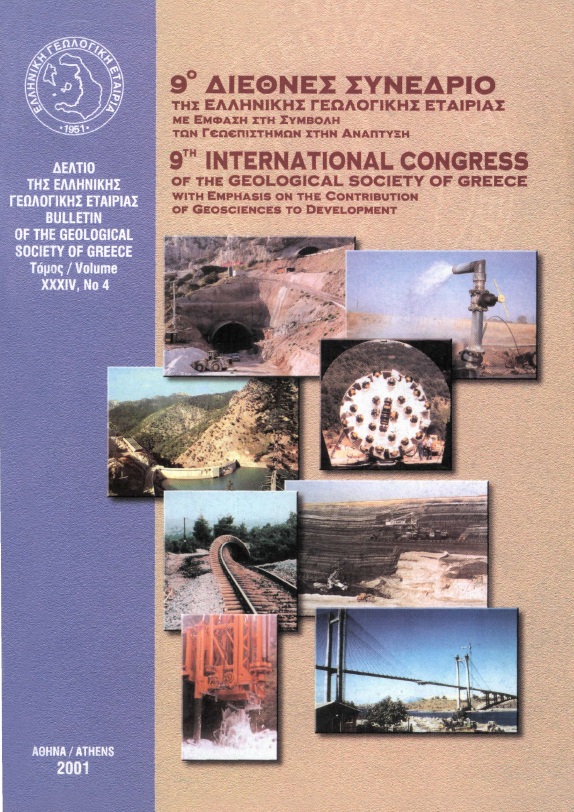THE CRITICAL EARTHQUAKE MODEL: OBSERVATIONS IN CRITICAL AREAS OF THE BROADER AEGEAN AREA
Περίληψη
The time variation of the cumulative Benioff strain, S, in several critical regions of past mainshocks which occurred in Greece and surrounding area has been examined, in an attempt to check the validity of the critical point concept. For this reason, data concerning the critical regions of twelve strong mainshocks, which have recently been defined by other scientists, have been used and intermediate-sized earthquakes which occurred before and after each mainshock were collected. It was found that the cumulative seismic crustal deformation released by these intermediate magnitude events was accelerating before all the mainshocks considered, whereas the deformation release rate during the respective postshock periods was, in general, lower than the preshock ones
Λεπτομέρειες άρθρου
- Πώς να δημιουργήσετε Αναφορές
-
Kourouzidis, M. C., Karakaisis, G. F., Papazachos, B. C., & Makropoulos, C. (2004). THE CRITICAL EARTHQUAKE MODEL: OBSERVATIONS IN CRITICAL AREAS OF THE BROADER AEGEAN AREA. Δελτίο της Ελληνικής Γεωλογικής Εταιρείας, 36(3), 1432–1440. https://doi.org/10.12681/bgsg.16532
- Ενότητα
- Σεισμολογία

Αυτή η εργασία είναι αδειοδοτημένη υπό το CC Αναφορά Δημιουργού – Μη Εμπορική Χρήση 4.0.
Οι συγγραφείς θα πρέπει να είναι σύμφωνοι με τα παρακάτω: Οι συγγραφείς των άρθρων που δημοσιεύονται στο περιοδικό διατηρούν τα δικαιώματα πνευματικής ιδιοκτησίας επί των άρθρων τους, δίνοντας στο περιοδικό το δικαίωμα της πρώτης δημοσίευσης. Άρθρα που δημοσιεύονται στο περιοδικό διατίθενται με άδεια Creative Commons 4.0 Non Commercial και σύμφωνα με την οποία μπορούν να χρησιμοποιούνται ελεύθερα, με αναφορά στο/στη συγγραφέα και στην πρώτη δημοσίευση για μη κερδοσκοπικούς σκοπούς. Οι συγγραφείς μπορούν να: Μοιραστούν — αντιγράψουν και αναδιανέμουν το υλικό με κάθε μέσο και τρόπο, Προσαρμόσουν — αναμείξουν, τροποποιήσουν και δημιουργήσουν πάνω στο υλικό.





